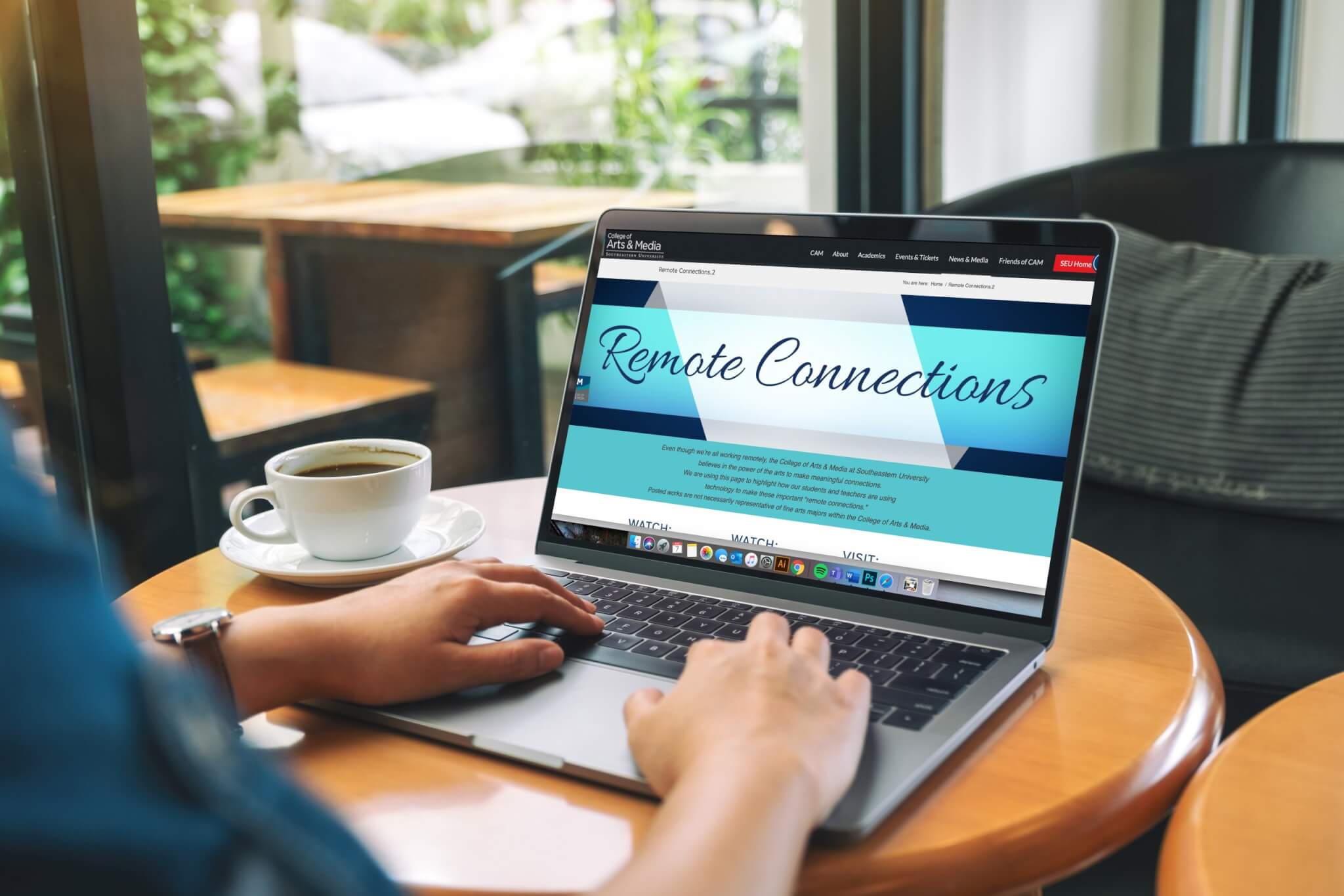Using Technology to Keep the Arts Alive
Through the years, Lakeland has taken steps to connect art and people. But today, as the coronavirus continues to isolate so many of us, Lakeland’s arts community is turning to technology to keep people in tune with music, dance, film and more.
We all know listening to a choir or a piano recital on an organization’s website or YouTube doesn’t quite capture the raw feelings of attending a live performance. But as more people are looking for a diversion, the spotlight shines on institutions of higher learning and nonprofits to help provide entertainment and enlightenment.
Craig Collins, dean of Southeastern University’s College of Arts & Media and chairman of Lakeland’s Mayor’s Council on the Arts, said his college recently created Remote Connections, a new website dedicated to displaying students’ work, everything from short films to documentaries and music.
He said the key is being creative in teaching and performing.
Associate Professor of Music Education Mark Belfast Jr. has been using Zoom to have guest speakers share their experiences and for students to present their end-of-semester projects. In his Jazz Ensemble class, he’s forgoing what can’t be done online (performing) for something new.
“Students were provided with Apple Music and Spotify links to three classic recordings by Miles Davis, Sarah Vaughan and Stan Kenton,” all of which they had been rehearsing, he said. “Students are required to listen to, analyze and describe specific components of the performance.”
The Department of Music within the college has also had to adapt its audition process. Now that face-to-face auditions are not possible, they are allowing potential new students to submit video auditions.
Collins said his college’s faculty members are committed to the mission of the university and ensuring students receive rigorous learning experiences. “The daily processes inherent to the arts are critical to building creative capital and continuing to engage our public in the human experience.”
In Florida, the arts contribute $33.4 billion to the economy. In Polk County, that number is $46.5 million, not including ticket sales. The industry also employs more than 2,500 people.
Nonprofits Using Technology
Local non-profits are also using technology and creating original content to connect with their students and the community. Florida Dance Theatre, for instance, is using a state grant to work with Florida Polytechnic University to use technology to showcase dance.
Jermaine Thornton, executive director of the Florida Dance Theatre, said the professional dance company and training academy have been creative in furthering their mission since the Dance Theatre closed its doors in March. Among other things, it’s developed a virtual academy so students can continue to train using Facebook and Skype.
But even before the pandemic, the dance theatre began working with Florida Poly — led by adjunct professor of art appreciation Victoria Lowe — to transform dance into digital art. Electrical engineering major Jaimie Davis sewed lightweight biosensors into sleeves for a dancer’s arm. The sensors collect data that is transmitted to Davis’ computer, where it’s converted to lines like those on some heart monitors. Those are converted into fractals and projected on a screen.
“We wanted to take the arts and STEM and combine them in this amazing way,” Davis said.
Thornton said the work will be used in demonstrations for Polk County students. “One of my goals is that we would not only be known as a place for arts and entertainment. We want to show it’s OK if we start tapping into things like science, technology, engineering, and math.”
Thornton said he thinks this “season of friction,” as he called it, will be valuable. “Either you rise up (and) explore different ways to use what you have to further the mission or sit down and magnify the negative aspects with uncertainty.”
Explorations V Children’s Museum continues to pivot services and is providing as many resources as possible, said Chief Executive Officer Kerry Falwell.
“Art is known to help us work through our emotions, and children are no different. We also have a very real responsibility to address the mental health of children. This is a scary time, and a child who feels unsure about the world around them is not prepared to learn.”
To help children learn and cope during the pandemic, the museum launched a new community resource page on its website, ExplorationsV.com/MuseumHelps, Falwell said. It includes:
- Information on access to day camps for elementary children whose parents are deemed “essential” and must continue to work.
- virtual learning resources. Like others, the museum is using social media to provide live virtual programs for families. “There is a calendar of when live virtual programs are happening on social media and links to archived lessons on the Museum Helps page.’’
“Credit is due to those executive directors using technology to keep their constituents engaged during this time of isolation,” Collins said. “History has long supported how the arts bring people together from all walks of life and that will never cease.”



